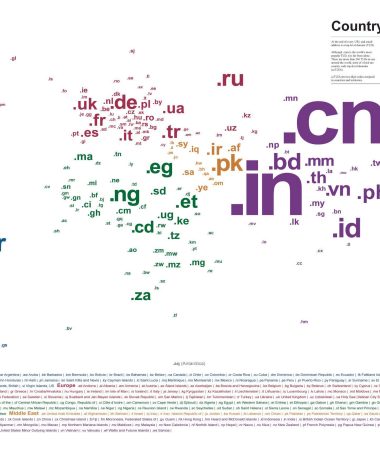Imagine the internet as an immense library, not of books, but of billions of websites and services.
Now, navigating this vast library to find the website you’re looking for can seem daunting. This is where the Domain Name System, or DNS, comes into play, acting as the internet’s phonebook.
It helps us find websites without needing to memorize their IP addresses, which are numerical labels assigned to each device connected to a computer network that uses the Internet Protocol for communication.
The Essence of DNS
At its core, DNS is a hierarchical and decentralized naming system for computers, services, or any resource connected to the internet or a private network. It translates more readily memorized domain names (like www.example.com) to the numerical IP addresses (like 192.0.2.1) needed for locating and identifying computer services and devices with the underlying network protocols.
This translation is necessary because, although domain names are easy for people to remember, computers or machines access websites based on IP addresses.
How Does DNS Work?
The process of DNS resolution involves converting a hostname (such as www.example.com) into a computer-friendly IP address (such as 192.168.1.1). When you type a domain name into your web browser, the DNS process kicks off:
DNS Query: Your computer sends a query to the DNS server with the name of the domain you are trying to reach.
Recursive Resolver: The query first reaches a DNS recursive resolver, which is typically operated by your internet service provider (ISP). If the resolver does not have the domain’s IP address in its cache, it will start a DNS lookup to find it.
Root Nameserver: The resolver queries a root nameserver (.). The root server is the first step in translating (resolving) human-readable host names into IP addresses. It doesn’t know the answer, but it can direct the query to a TLD (Top-Level Domain) nameserver (such as .com, .net, or .org).
TLD Nameserver: The TLD nameserver takes the query closer to the destination by pointing to the nameserver responsible for the domain’s IP address.
Authoritative Nameserver: This server has the actual information about the domain’s IP address. If the authoritative nameserver has access to the requested record, it will return the IP address for the domain back through the chain to your computer.
Resolution: Your computer receives the IP address and connects to the website’s server, allowing the web browser to load the website.
Types of DNS Queries
During the resolution process, three types of queries can occur: recursive, iterative, and non-recursive. In a recursive query, the DNS client requires a DNS server to respond to the client with either the requested resource record or an error message if the resolver can’t find the record.
In an iterative query, the DNS server will respond with the best information it currently has, which might be the address of a DNS server closer to the information the client is seeking.
A non-recursive query typically occurs when a DNS resolver client queries a DNS server for a record it has access to either because it’s authoritative for the record or because it has the record in its cache.
Importance of DNS
DNS is fundamental to the functionality of the internet. Without it, we would be forced to navigate the web using IP addresses, an impractical and challenging task given the internet’s scale.
DNS not only makes the internet more accessible by allowing us to use intuitive names to find websites but also adds a layer of resilience and efficiency. The distributed nature of DNS, with its hierarchy of servers, means that if one server fails, others can take over, ensuring that the internet remains robust and accessible.
Moreover, DNS plays a crucial role in internet security. It’s a target for malicious activities like DNS spoofing, where an attacker intercepts and redirects a legitimate web address to a fraudulent website. To combat such threats, extensions like DNS Security Extensions (DNSSEC) have been developed to add a layer of security by validating the authenticity of the DNS response, ensuring that the website you’re trying to visit is the legitimate one.
In the grand tapestry of the internet, the Domain Name System (DNS) is an indispensable thread, weaving together the numerical world of IP addresses with the human-friendly domain names. It’s a system that works so seamlessly and efficiently behind the scenes that most internet users are unaware of its existence, despite using it every time they visit a website.
Understanding DNS is not just about appreciating a key piece of internet infrastructure; it’s about recognizing a cornerstone that supports the ease, speed, and security with which we navigate the digital world.
Evolution of DNS: Adapting to a Changing Internet
As the internet has evolved, so too has the Domain Name System. Initially designed to manage a modest number of internet addresses, DNS has scaled dramatically to accommodate billions of domain names and countless daily queries.
This scalability is a testament to the robustness of the DNS architecture, which has expanded through the addition of numerous top-level domains (TLDs) and improvements in DNS software and protocols to handle the growing demands of the internet.
One significant advancement in the evolution of DNS is the introduction of internationalized domain names (IDNs). IDNs allow domain names to include characters from non-Latin scripts, such as Cyrillic, Arabic, Chinese, and many others. This development has made the internet more accessible to users worldwide, enabling them to use domain names in their native languages and scripts.
DNS and Internet Security
The critical role of DNS in internet infrastructure also makes it a focal point for security concerns. DNS hijacking, cache poisoning, and Distributed Denial of Service (DDoS) attacks targeting DNS servers are just a few examples of how attackers can exploit DNS vulnerabilities. In response, the internet community has developed several security measures:
DNSSEC (DNS Security Extensions): DNSSEC adds digital signatures to DNS data to verify its authenticity, protecting against certain types of attacks, such as cache poisoning.
DNS over HTTPS (DoH) and DNS over TLS (DoT): These protocols encrypt DNS queries, preventing eavesdropping and manipulation of DNS data by intercepting network traffic.
Rate limiting and monitoring: Implementing rate limits on DNS queries and closely monitoring DNS traffic can help mitigate DDoS attacks.
These and other security measures are crucial for maintaining the integrity and availability of DNS services, protecting users from fraud and ensuring that the internet remains a safe space for communication and commerce.
DNS Beyond Web Browsing
While DNS is most commonly associated with translating domain names to IP addresses for web browsing, its utility extends far beyond. DNS plays a pivotal role in email delivery, online gaming, internet of things (IoT) device connectivity, and cloud services.
It facilitates the routing of email to the correct mail server, connects gamers to their chosen game servers, and enables seamless communication between IoT devices and their controlling servers.
Furthermore, DNS has been leveraged for innovative purposes, such as load balancing and traffic management. By controlling DNS responses, services can direct users to the nearest or least loaded server, optimizing performance and user experience. This dynamic response capability demonstrates the flexibility and power of DNS as a fundamental internet technology.
The Future of DNS
Looking ahead, the future of DNS holds both challenges and opportunities. The ongoing growth of the internet, particularly with the proliferation of IoT devices and the expansion of 5G networks, will place even greater demands on DNS infrastructure.
The need for enhanced security measures will continue to grow, as will the importance of DNS in supporting new internet technologies and services.
Innovations such as machine learning and blockchain have the potential to impact DNS operations and security positively. Machine learning could be used to detect and mitigate DNS-based attacks more efficiently, while blockchain might offer new ways to manage DNS records with increased security and decentralization.
The Domain Name System is a cornerstone of the internet, essential for its functionality and user-friendliness. As we navigate through the digital age, the importance of understanding, maintaining, and securing DNS cannot be overstated. It is a dynamic system that has adapted to the internet’s growth and will continue to evolve to meet future challenges.
Recognizing the significance of DNS is key to appreciating the complexity and brilliance of the internet—a network that, despite its vastness and intricacies, connects us all with remarkable simplicity and efficiency.









